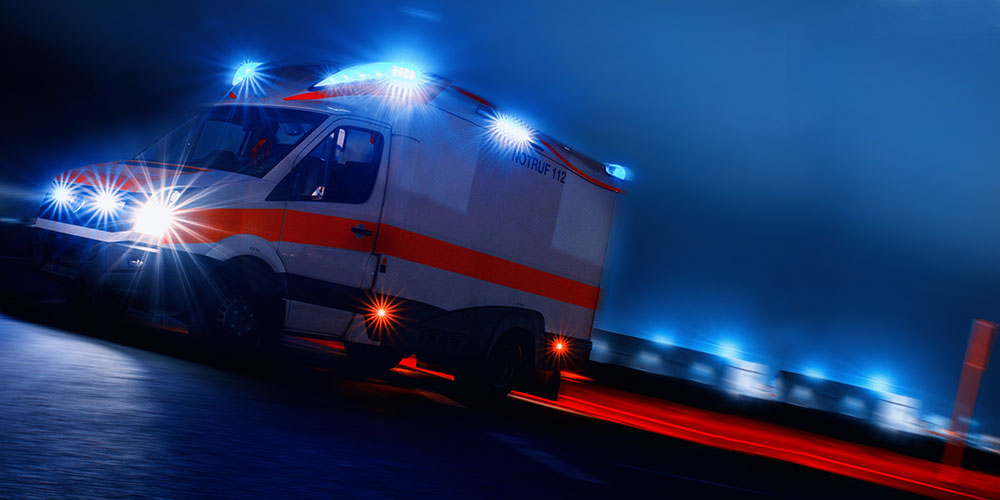Advanced Mobile Location

Emergency Calls
Emergency calls are about getting rescue personnel on the spot quickly. Emergency calls can be placed internationally from mobile networks by calling 112. But is difficult to help fast if the caller doesn't know exactly where he is. Whether somewhere on a motorway or even skiing in the mountains - it is useful if the position is automatically forwarded to the emergency services. Almost all smartphones feature the required GPS localization and even some feature phones support it.
AML
With AML mobile phones send their location when placing an emergency call by SMS in the background to the rescue coordination center, even when GPS and WLAN localization are disabled. Both are activated automatically at the beginning of the call and an SMS with the location data is 20 seconds later. Rescue coordination centers, which are connected to AML can thus determine faster, where the emergency call comes from. Even if the caller doesn't know the language of the coordination center it knows at least where he is. The function does not have to be activated by the user because it is integrated into the operating system and works automatically. The SMS with the location is not directly transmitted to the rescue coordination center in Germany , but to access points, operated by the fire brigade of Fribourg and Berlin. From there it is forwarded to the connected rescue coordination centers. The location data is deleted after one hour.
Coverage
AML already works in many countries like Austria, Belgium, Denmark, Dubai, Estonia, Finland, Iceland, Ireland, Lithuania, Netherlands, New Zealand, Norway, Slovenia, USA and Great Britain. In Germany, it has been working since October 2019.
Mobile Phones
AML works on smartphone since Android 2.3 or iOS 11.3, while the system was activated for Germany in iOS 13.3
ELS & AEI
Google calls the service, used in Android for AML, ELS and transmits additional data, starting 2024, which is called AEI. In addition to the system language set on the cell phone, emergency contacts and medical data can be transmitted with the user's consent. For the transmission of emergency contacts and medical data, such as date of birth, blood group, allergies or medication, the user must opt in. The user can also choose to have the data only on the device itself so that it can be displayed on site, but exclude automatic transmission to the rescue service. The setting is made via the emergency app, integrated on the smartphone.
Legal Situation
The EU Directive 2018/1972, which came into force in December 2018, contains the following provisions the member states are obliged to ensure that the rescue coordination center is provided with information on the caller location of the emergency caller. This explicitly includes "from the Mobile device obtained information on the location of the caller".
Statistics
In 2019, over 70 % of emergency calls in Europe were made with
a mobile phone. In Germany, the share was 64 % (Source: European Commission 2020). In 2023,
there were 30 million emergency calls in Germany, of which over 90 % came from cell phones.
80 % of these calls were made via 4G and 5G and 20 via 2G (source: ![]() Telekom).
Telekom).
Police Emergency Call
At the beginning of 2024, it was decided to also implement AML for calls to the German police emergency number 110. The pilot operation started in Baden-Württemberg, Schleswig-Holstein and Hesse. Bavaria followed at the beginning of 2025. Lower Saxony, North Rhine-Westphalia, Brandenburg and Rhineland-Palatinate are set to follow soon. As jurisdiction is a matter for the federal states it may be some time before AML can also be used nationwide for police emergency calls.


